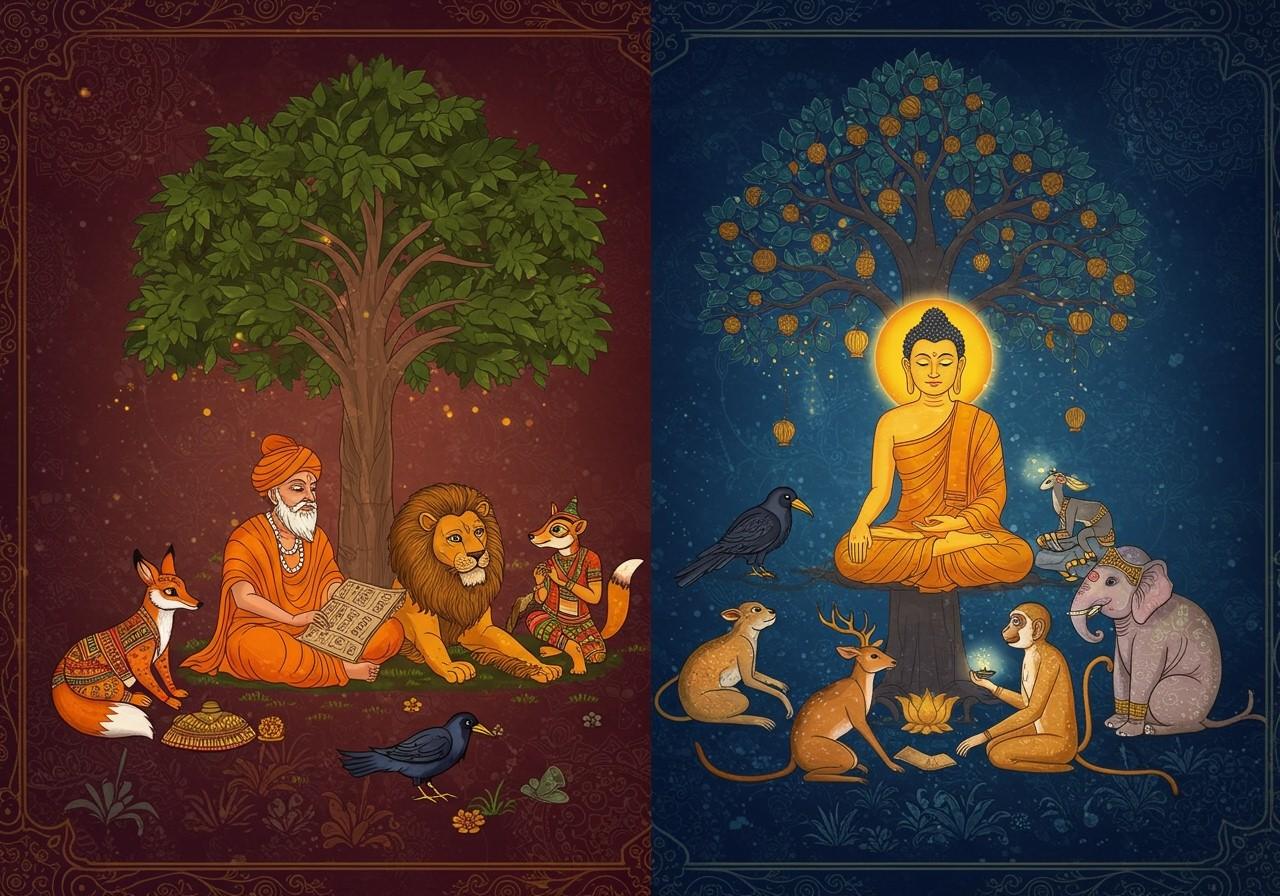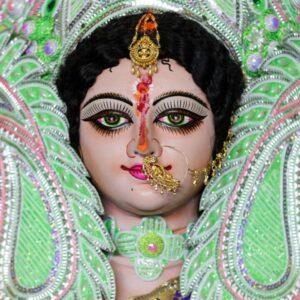
The Panchatantra and Jataka Tales stand as two pillars of ancient Indian storytelling. Passed down through countless generations, these fables have profoundly shaped Indian culture and moral education. This article delves into the origins, structure, themes, and cultural impact of these narratives, highlighting their unique characteristics and shared significance.
Origins and Historical Context
Unearthing the Roots of the Panchatantra and Jataka Tales
The Panchatantra, attributed to Vishnu Sharma, is believed to have been compiled around 200 BCE. It comprises five interconnected books, each brimming with animal fables crafted to impart wisdom and practical life lessons, particularly in statecraft. The Jataka Tales, rooted in Buddhist literature, recount the previous lives of Gautama Buddha. Dating back to the 4th century BCE, these tales serve as a cornerstone of Buddhist teachings, emphasizing moral principles and ethical behavior.
- Panchatantra: A collection of interconnected animal fables in Sanskrit, compiled around 200 BCE, often used for teaching statecraft and practical wisdom.
- Jataka Tales: Stories narrating the past lives of the Buddha, originating around the 4th century BCE, emphasizing moral principles and Buddhist teachings.
Both collections have transcended geographical and cultural boundaries, translated into numerous languages and adapted across diverse regions.
Structure and Narrative Style
The Art of Storytelling
The Panchatantra’s structure is intricate, with five books, each exploring a specific theme such as friendship, conflict resolution, and leadership. The narratives often employ a “story within a story” technique, creating a rich, layered experience. In contrast, the Jataka Tales adopt a simpler structure, each story presenting a clear moral lesson through the actions of the Buddha in his various incarnations.
- Panchatantra: A complex narrative structure featuring interwoven stories, creating a multi-dimensional reading experience.
- Jataka Tales: A straightforward narrative style with each story directly conveying a moral message through the Buddha’s actions in his past lives.
While the storytelling techniques and the use of animal characters differ between the two, both aim to captivate readers and impart valuable life lessons.
Themes and Moral Lessons
Wisdom Gleaned from Ancient Fables
Both the Panchatantra and Jataka Tales are treasure troves of moral teachings. The Panchatantra emphasizes practical wisdom, resourcefulness, and strategic thinking. Its stories explore themes such as friendship, the pitfalls of greed, and the importance of virtues like honesty and loyalty. The Jataka Tales, on the other hand, center on ethical conduct, compassion, and the path to enlightenment. They illuminate virtues like generosity, patience, and self-sacrifice.
- Panchatantra: Focuses on practical wisdom, resourcefulness, and strategic thinking, providing guidance for navigating worldly affairs.
- Jataka Tales: Highlights ethical conduct, compassion, and the pursuit of enlightenment, offering profound insights into spiritual growth.
These themes reflect the cultural and philosophical values of ancient India.
Cultural Significance and Impact
A Legacy of Wisdom
The Panchatantra and Jataka Tales have deeply influenced Indian culture and education. Translated into numerous languages, they have reached audiences far beyond their original context. These stories are woven into the fabric of Indian literature and remain popular in contemporary adaptations.
Shaping Moral Education
In many Indian homes, these fables are among the first stories children hear. More than mere entertainment, they impart essential moral lessons. Through engaging narratives, children learn about values such as honesty, loyalty, and compassion.
- Panchatantra: Imparts practical wisdom and life skills through engaging animal characters, making learning enjoyable and memorable.
- Jataka Tales: Instills ethical conduct and moral principles based on the Buddha’s teachings, fostering a sense of compassion and righteousness.
Parents and grandparents often use these tales to instill values in younger generations, ensuring the continued relevance of these ancient stories.
Presence in Contemporary Media
These timeless tales have found their way into contemporary media, including literature, television, and film. Animated series based on the Panchatantra and Jataka Tales are beloved by children. These modern adaptations keep the stories alive for new audiences.
- Television and Movies: Animated series and film adaptations introduce these ancient stories to wider audiences, ensuring their continued relevance in modern times.
- Books and Comics: Children’s books and comic books often feature these fables, making them accessible and engaging for young readers.
Connecting with Ancient Wisdom through Poojn.in
Enhance Your Exploration of Ancient Indian Literature with Poojn.in
Poojn.in offers a curated selection of products to enrich your understanding and appreciation of ancient Indian literature, including the Panchatantra and Jataka Tales. Our collection includes:
- Brass book stands: Ideal for displaying sacred texts with reverence.
- Pure copper water vessels: Connecting to the tradition of mindful reading.
These items can help create a conducive environment for studying and sharing these timeless stories. At Poojn.in, we guarantee the authenticity and ritual purity of all our products, making them perfect for both scholarly pursuits and sharing these tales with future generations. Visit Poojn.in to discover our full range of traditional items.
Timeless Tales for Generations to Come
The Panchatantra and Jataka Tales remain integral to our cultural heritage, bridging the past with the present. Through their enduring wisdom and captivating narratives, they continue to impart valuable life lessons to each new generation. Cherished by families, these stories provide a foundation for moral education and ethical conduct.
By adapting these fables to contemporary media, we keep their legacy alive, ensuring that the virtues they embody are never forgotten. Whether through bedtime stories, animated shows, or children’s books, the Panchatantra and Jataka Tales will always find ways to inspire and guide us.
By embracing these tales, we honor our rich heritage and transmit the beauty of our traditions to future generations, preserving the timeless values and wisdom that have shaped our culture.
For further exploration of related concepts, consider these resources:
- Hindu Philosophy Explained: A Beginner’s Guide
- Enchanting Tales of Lord Krishna: Divine Stories and Timeless Lessons

